
Find out the average cost to install a pool filter, including installation, maintenance, and replacement, plus tips on choosing the right filter for your pool.
Consider these factors before diving into the deep end


An in-ground pool costs about $55,000 to install.
Expect to live in a construction zone for about three months.
You can’t add certain features later, so make your decisions carefully.
Don’t rush to partner with a contractor before doing your due diligence.
Nothing is more refreshing than a dip in a pool on a hot summer’s day, but as relaxing as that may sound, the actual steps for putting in a pool aren’t. You'll have to consider various factors, from price and design to regulations and contractors. Before you start digging, dip your toe into the process of putting in a pool by familiarizing yourself with these 10 factors.
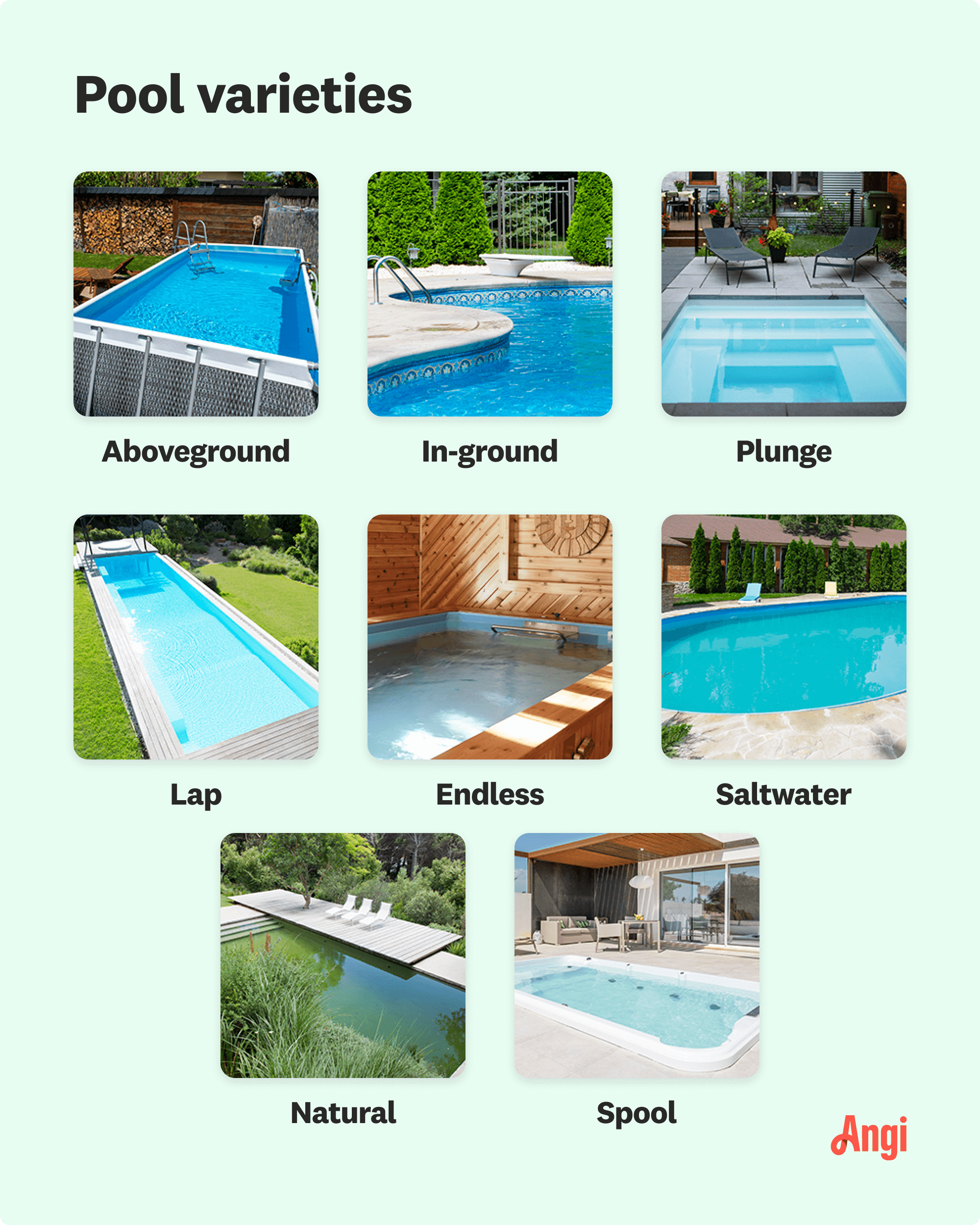
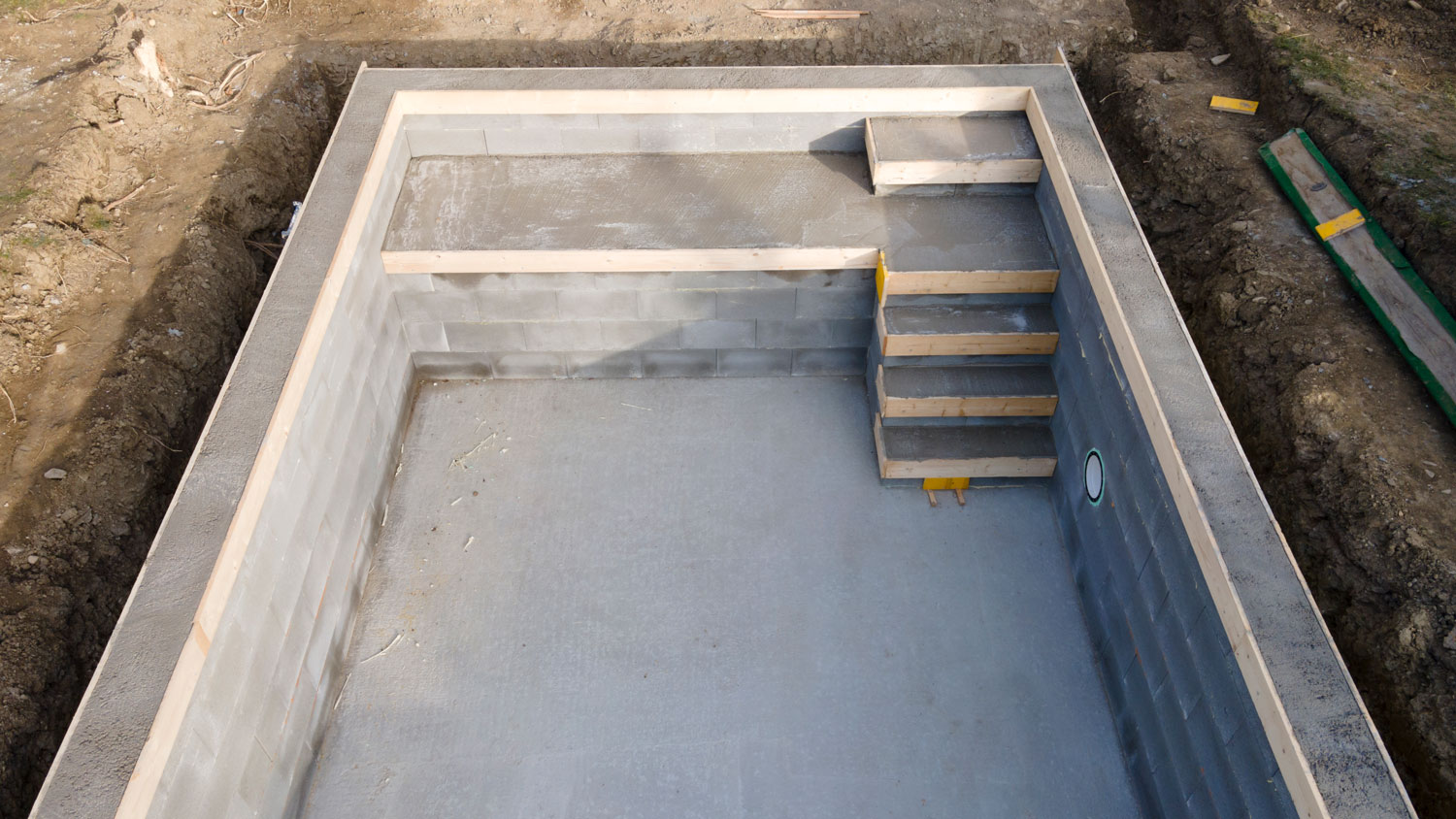
You might be surprised by how much a pool costs. Plus, when a contractor starts to sell you on certain features, it’s easy to say yes without fully considering how much it will put you back.
Before you even start dreaming of Sundays by your new pool, put a budget together. Expect to spend anywhere from $1,040 for the cost of a basic above-ground pool to $70,000 for the cost of an in-ground pool. This range is quite large, so it’s important to find a budget you’re comfortable with. The cost of a semi-inground pool falls in the middle, costing between $7,000 and $25,000 on average.
You will have to make a lot of decisions when it comes to putting in a pool, from the material of the liner to the finish on the water slide, which can add costs here and there. Having a range (with a little wiggle room) already in place before drawing up the blueprints will ensure that you’re happy with the final product while staying within the budget.
There’s more to the budget than just the pool itself. Here are a few pricey line items to add to your budget for putting in a pool:
Ongoing maintenance: On average, swimming pool maintenance costs $230 per session. This includes maintenance, cleaning, and utilities. If you’re doing it yourself, expect to spend anywhere from $20 to $100 per month on supplies during the pool season to balance the pool levels and keep it clean.
Pool insurance coverage: Most insurance companies will up your policy after putting in a pool, including increasing your liability insurance.
New pool decor: To turn your pool into a backyard oasis, you’ll likely want new furniture, lighting, and statement features like a standout outdoor kitchen design.
Updated landscaping: After construction, you’ll have dirt around your new swimming pool and will most likely want to invest in the cost of landscaping to blend the pool into your yard.
Pool covers: During the off-season, you’ll need to cover your pool to keep it clean and sanitary. The average pool cover costs $1,600 but can go as low as $750 or as high as $2,500, depending on the material.
There are various types of pools that fit a range of lifestyles. Whether you plan to get in those morning laps, take a quick dip to cool off, or host pool parties, there’s a pool for you. Each design will have different pool excavation costs and timelines.
Here are some of the top types of pools to consider.
Plunge pool: A plunge pool has a small yet deep design and is ideal for lounging or dipping into the water to cool off. The design takes up less space and costs less than most standard-sized pools.
Lap pool: On the other side of things, lap pools are typically long and thin and are designed for exercise. Some lap pools extend up to 70 feet long.
Endless pools: Endless pools include a motorized propellor that creates a current in a pool. The design is often small enough to fit into a small enclosure or even a garage and allows swimmers to swim "laps" while staying in place.
Saltwater pools: Saltwater pools come in all shapes and sizes, but they skip the traditional chlorine cleaning solution.
Natural pools: Natural pools depend on living organisms inside the pool itself to balance the water's clarity. These pool designs are much larger and often feature one area for swimming and one for regeneration.
Spools: Spa pools offer the best of both pools and hot tubs. They are standard pools with hot tub features like jets and heating—they’re small and meant for relaxing.
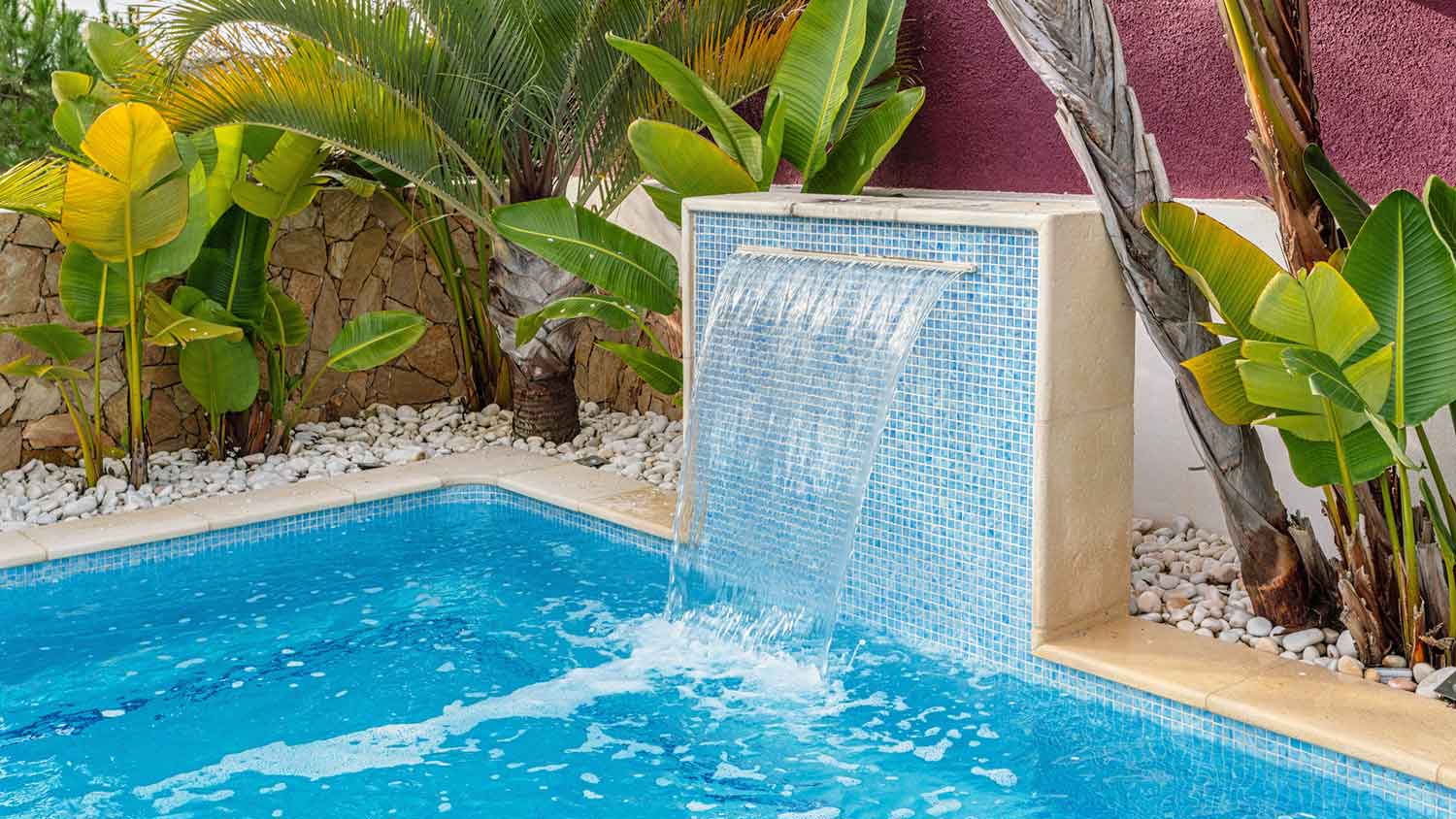
When putting in a pool, plan out all of the features you want to install, like water slides or tanning ledges. Once the pool installation is complete, you can’t dive back in and install another feature—you have to do it during the planning stage.
So although it may seem expensive at the time, make sure you get everything you want out of your new pool by adding in every must-have feature (within your budget). Installing it later down the road will be much more expensive and time- consuming.
Some of the features you might consider for your pool design are listed in the table below.
| Pool Feature | Average Price |
|---|---|
| Water slide | $4,000 |
| Inground hot tub | $13,000 |
| Waterfall | $7,000 |
| Tanning ledge | $10,000 |
| Bubbler fountain | $700 |
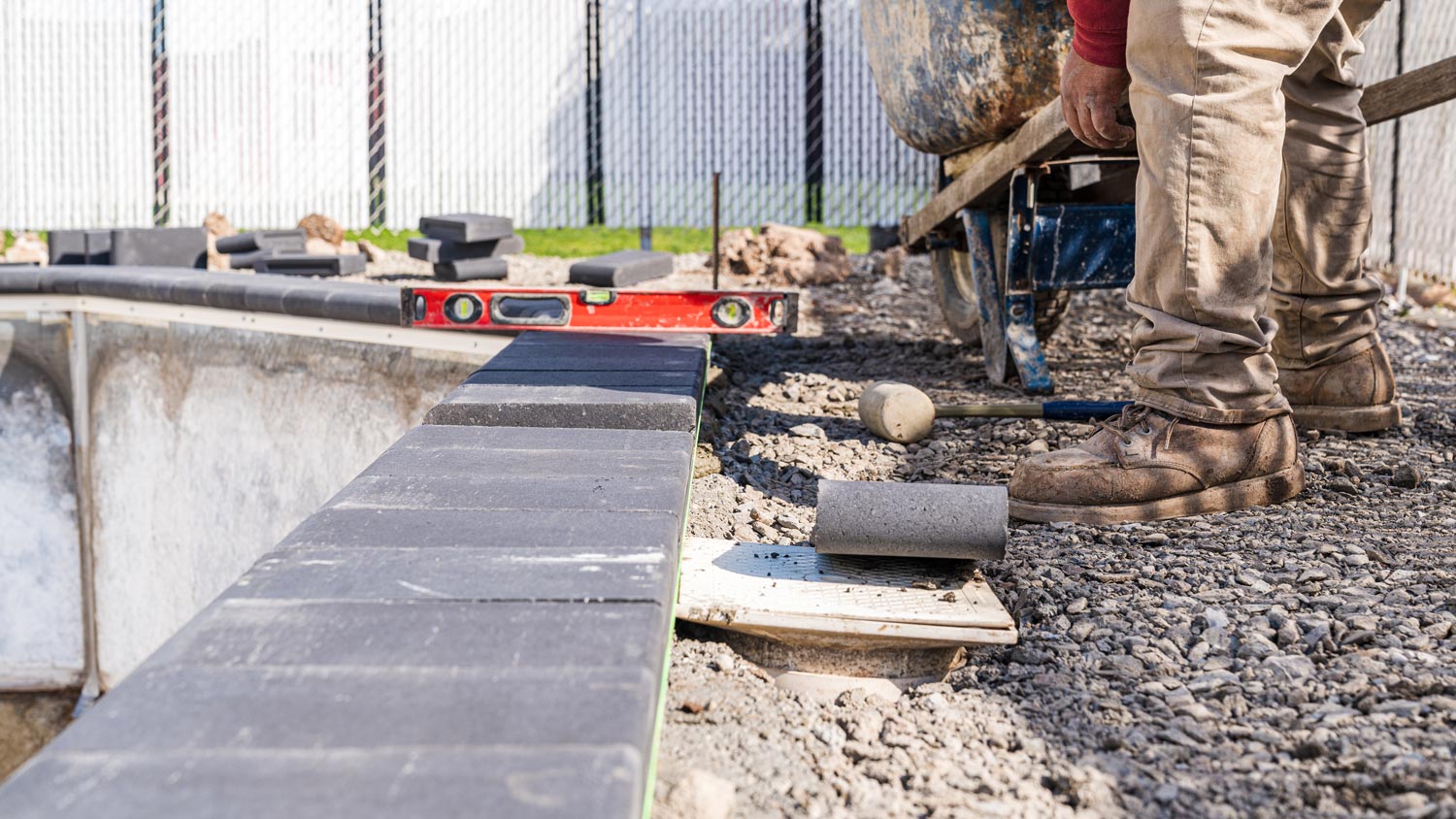
Probably the hardest part of putting in a pool is finding a pool contractor you trust. Not only is this person going to be in charge of your summertime dreams, but they’ll also be handling a big chunk of your money. You’ll want to do your due diligence before hiring a local inground pool installer to ensure they’re reputable and skilled.
Contractors vary significantly in terms of their services. Some simply dig a pool and pour in concrete and water, while others help you design the project and install new landscaping. Go into the process knowing your needs and priorities and make sure the contractor you hire can meet those goals. Make a list of questions to ask your pool builder to clarify the payment schedule, building timeline, and included features.
One big mistake you can make is going with the first contractor you meet. You’ll have no idea if the price point is fair without getting multiple bids. A bid that’s unusually cheap can also be a red flag. Getting multiple bids will help you make a smarter decision about who to hire and at what price point.
All contractors should be armed with testimonials and images of past projects, so don’t be afraid to ask for them. This is a good chance to check out the work they’ve done in the past and see what other clients have said about the process of working with them.
The time it takes to install a pool should be a significant factor in your planning process. It takes about 12 weeks to put in a pool on average, depending on the complexity of the design. That means you’ll have a construction zone in your backyard for three months, with contractors coming in and out of your space.
If you have dogs or young kids, losing your backyard for that time can be challenging. And if it rains, the area will become a massive mud pit. Therefore, the best time to install a pool is usually in the fall or winter. Not only will this time help you avoid rain in most areas of the nation, but it will also give you time to regrow plants and grass before summertime rolls back around.
Don’t forget to do a little bit of research before you dive head- first into the deep end. When putting in a pool, there may be some applicable renovation building permits you have to obtain.
Most cities will require that you pay a permit fee when installing an inground pool (and sometimes even an above- ground pool). Usually, your contractor will handle this as part of their services and support.
But, there are other factors you may have to pay for depending on your city. For example, in Miami (and in many other cities) you are required by law to have a fence installed around the perimeter of your pool. Pool fences cost an average of $15 to $25 per linear foot.
And if your neighborhood has a homeowner’s association (HOA), you’ll need to get in touch with them to see what requirements they have.
Choosing a finish for your pool will determine major cost factors, how long it takes to install the pool, and long-term maintenance and repair prices. Pool finishes also affect its overall style and how well the pool blends with the deck and the rest of your landscape. Some popular pool finishes include:
Glass beads
Ceramic tile
Stone tile
Plaster
Epoxy paint
Polished aggregate
Pebbles
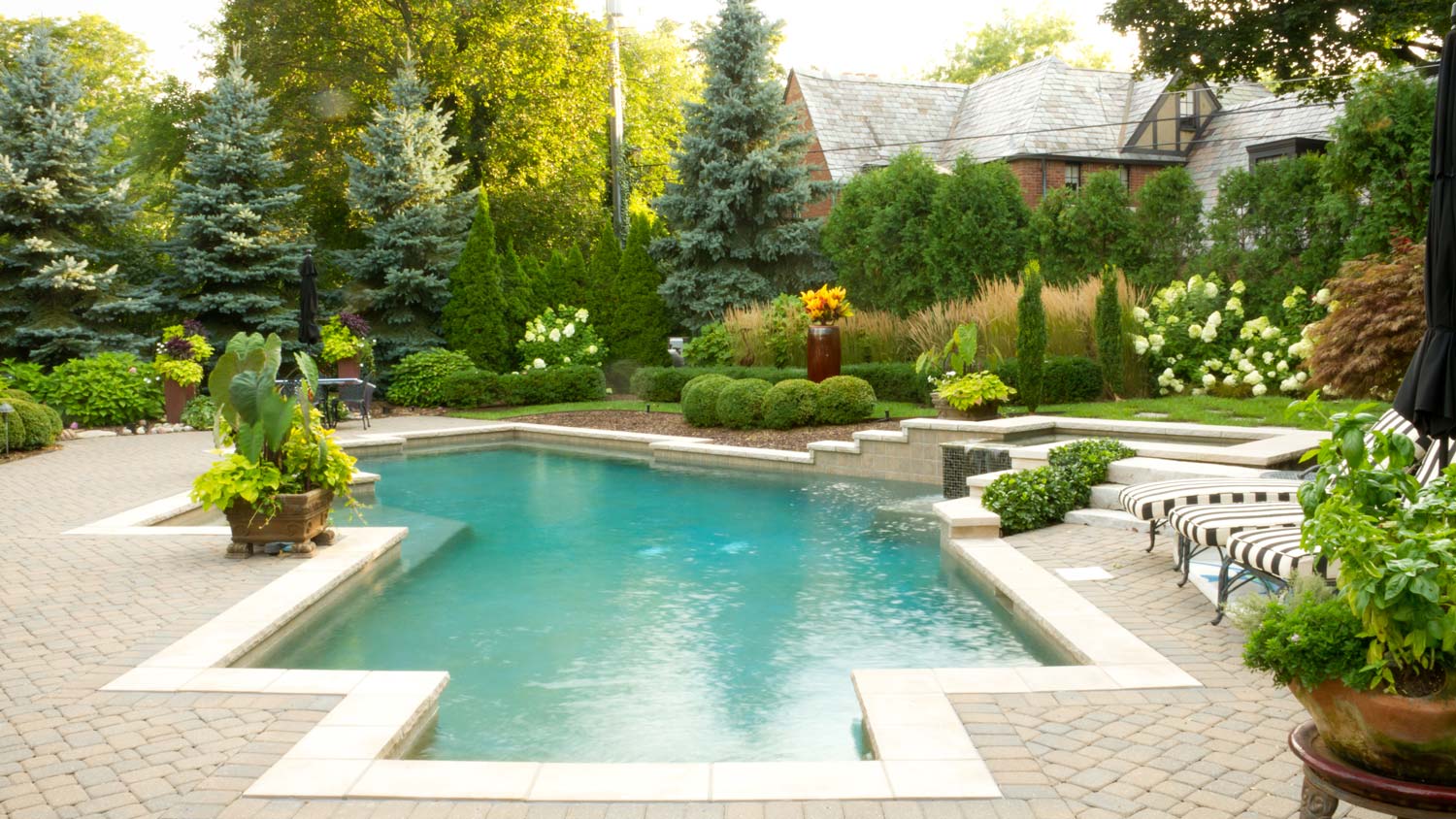
Choosing the best pool design for your home is just not just about the pool itself. Local regulations may dictate the size and shape of your pool as well as the safety features necessary to prevent injury. Some poolscape elements to consider include:
The design of your pool deck or patio
Pool coping and how it blends with your pool deck
Proper pool lighting for both safety and style
Landscape elements that blend with the style of your pool
Fire pits or fire bowls for natural illumination
Seating or dining areas that blend with your pool design
Installing a pool enclosure and considering a pool enclosure's costs
You will need to follow a pool maintenance checklist as long as it remains open. Not only will you need to balance the chemicals and keep an eye out for debris, but it's important to be on the lookout for potential pool repairs as well. Even in the off-season, winterizing your pool is a careful process that requires a deep clean and protection from the cold months.
Hiring a pool maintenance team is a great way to cut down on weekly work. You can often hire professionals for ongoing contractors or to step in when you go on vacation.
No matter the age of the people in your home, taking proper pool safety precautions and childproofing your pool is a must-have on your to-do list. Consider getting trained in pool and swimming safety tactics like CPR. If you do have children at home, a pool alarm and a pool fence may be necessary.
Pool safety also extends to storing chemicals correctly and out of reach from children either living in or visiting your home. Additionally, test the water regularly and always bring in a professional if you're concerned about an imbalance in pool water chemicals.
Putting in a pool is a large responsibility when it comes to safety, so be sure you're comfortable with the added element of care before breaking ground.
As you can tell, putting in a pool is expensive, time- consuming, and full of complicated and intricate decision-making. And there’s no guarantee that you’ll see an ROI on your cost to build a pool when you sell your home. For some buyers, buying a home with a pool can be a deal breaker.
If you’re considering putting in a pool but aren’t sure yet if it’s for you, consider these pros and cons:
| Pros of Putting in a Pool | Cons of Putting in a Pool |
|---|---|
| Your home can become a popular hang-out spot | You’ll likely be asked to host more events |
| You may save on vacations or pool memberships | It’s expensive to install and maintain |
| You may be able to save on air-conditioning with this cool-down solution | Your homeowner’s insurance will likely go up |
If you think you’ll get your money’s worth out of your pool, then it’s absolutely worth it for you. But some homeowners believe that owning a pool is an expensive and time-consuming maintenance project.
Taylor Sansano contributed to this piece.
From average costs to expert advice, get all the answers you need to get your job done.

Find out the average cost to install a pool filter, including installation, maintenance, and replacement, plus tips on choosing the right filter for your pool.

The cost of pool liner replacement in Columbus depends on the size and shape of your pool, as well as the liner material and type. Here’s how the costs break down.

If you’ve been considering installing a new pool in the Buckeye State, this guide will help you understand inground pool costs in Columbus.

Elevate your swimming experience with a DIY pool heater. This guide includes four methods for using the sun's energy to warm your water.

If your water has high calcium hardness, it's important to learn how to lower calcium hardness in your pool water to avoid corrosion that can harm your pool's plumbing.

Install a pool liner by draining the pool, removing the old liner, and laying the new one. Keep reading to learn how to install a pool liner like a pro.